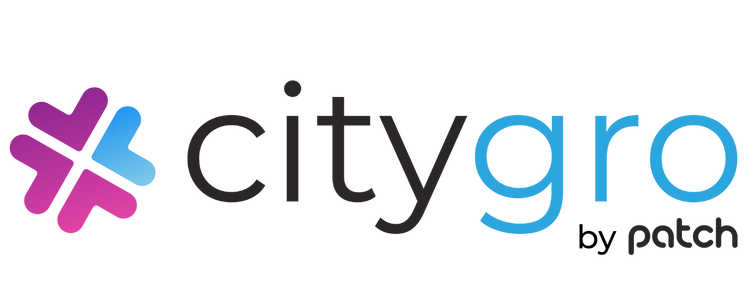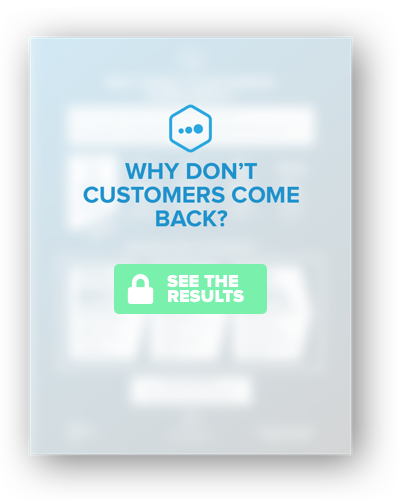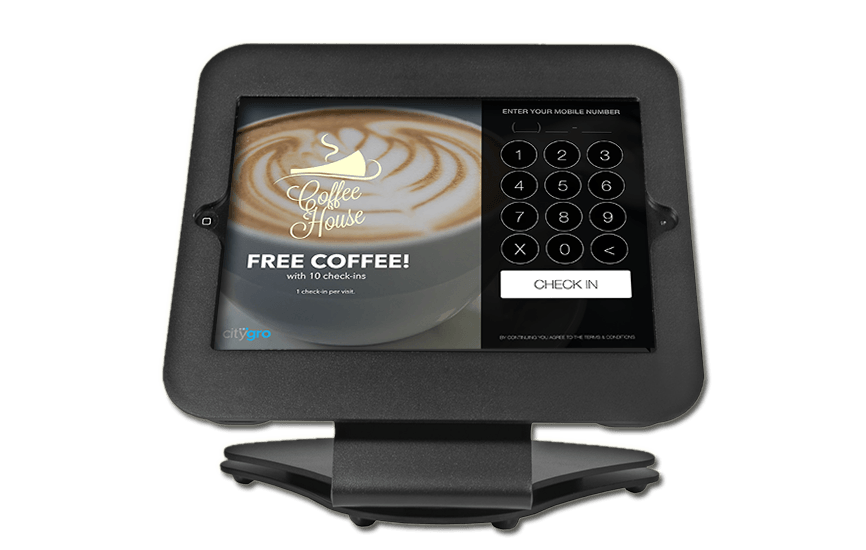Using Waivers As A Marketing Channel
Watch above as we go over how you can turn your waivers into a valuable marketing channel. We will go over:
- How you can take the information gathered on your waivers to boost sales and return visits.
- What you need to include to ensure you are TCPA compliant.
- How you can use your waivers to make a highly specific marketing campaign that gets the right message in front of the right person at the right time.
Transcript
Hey, welcome back. We’re live here at CityGro. I’ve got, I’m John, I’ve got Eric with us. Are Sales Guru here talking today about waivers. So, let me introduce it this way. The waivers is kind of a of a fun thing here. CityGro because we use them a ton, but most people don’t connect a communications company as a digital waivers company. So how does that work within CityGro? It’s kind of funny. That gets brought up all the time because you think CityGro, anything, customer retention, you think loyalty, you think all of that. And then waivers is just kind of off to the side and so it’s kind of weird thinking. How do those connect to each other? Yeah, and so we’re kind of, we’re waivers fit in is we found waivers. It’s a part of a process for a business, right?
You go to a certain business, you have to sign a waiver, which is the perfect excuse to collect information and part of the process that’s already doing it. They just part, he said part of the process, you know. Exactly. Yeah. So it’s there, it’s the perfect excuse in a lot of what we’ll talk about today is using that information from your waiver and directing it to more of like a marketing communication channel. OK. So, so let’s talk about industries that used waivers and then maybe branch off on this question too is let’s say I have a business that doesn’t use a waiver, but it’s not out of the realm to have my customers go through that kind of process. Would you recommend they get into that just because they can, even though they don’t, they don’t really have to. Yeah. So I’ll talk about industries first.
There’s industries that we typically work with and then touch on the second question. You know, industries that usually use waivers. You’ve got like your go-kart racing trampoline parks, bounce houses, a gun ranges, salons probably lot. Yeah. Depending on the type of salon, you know, tanning salons, that can be huge. A paint ball, a skydiving. I mean the list goes on and on. There’s, there’s all types of, of businesses or industries that have to use a waiver. It’s just part of their process, right? As far as recommending other types of businesses, I would say if you can go for it just because it makes it part of the process and then you have that excuse to collect the information from everybody. I’m assuming that you can get away with that. I see that kind of with salon with salons, you know, some salons they don’t have to have a liability waiver necessarily, but they can easily make it part of their process.
For instance, like a new client form or like a customer intake form like that. And it doesn’t have to be there for like a hair salon, but they could easily make it part of their process and see the benefits are to put that in perspective. Like let’s talk about restaurants. You usually don’t sign a waiver. The food would be pretty bad numbers or require a server that I have seen it with wing places like spicy child do something like that. So you can’t do it there. So that’s why loyalty is big on the restaurant side, I guess little things big everywhere to try to capture data coming back. But where you can compare. Contrast like a loyalty system versus a waiver with the loyalty system. Loyalty systems are pretty optional. I go in if I want to be a part of it, I can for sure.
So we have really good rates of people that sign up for those. But with a waiver a hundred percent of people come through. So just to kind of recap what you’re saying exactly. A waiver as part of once they have said this a couple of times, but it’s part of the process in a hundred percent of people do it. So that’s really the advantage of, you know, when you’re looking at turning it into a marketing channel, you’re capturing info from a hundred percent of people. It’s not just the voluntary customers. Granted part of that plays into consent but. But yeah, that’s, that’s the real advantage there. So I guess in theory a cuckoo reasons, term waiver that kind of denotes that you, you have to sign something. You don’t have to. I mean, we could for sure, like a registration form, could be part of it or a sign up form like a salon might ask you for more information and not force you to sign a waiver of the example I shared with the salon is like a client intake form or a new client form that’s not really a waiver, but it’s questionnaire generic or something like that.
That’s part of the process and at that point if they’re getting a hundred percent of people to fill it out. Cool. Cool. So all right, so let’s, let’s take you to the next step. Obviously with w here at San Diego, we focus on real big on collection, communication and then convert. So let’s walk through the communication. How do you, how do you use that waiver or sign-up form as a communication channel? So a couple of things. First of all, making sure you’re gathering information that ties into communication. So, you know, on a, on a typical liability waiver, there will be a place to put in your name maybe like your address and then a signature or maybe initial boxes, right? So if you don’t have anything asking for like a email address or a phone number, a communication channel, then you really can’t leverage that into communication.
So that’s the first step is making sure alongside like the signature and the waiver information, getting an email address or a phone number, whatever it might be. Once you collect that gathering consent, so adding a page or a checkbox or whatever it is saying, yeah, you can send me messages, but if we could fold those words that you just said because it would be too bad to have this great process in play where you’re asking for all this data and you look back over the years and say, man, I’ve, I’ve collected 5,000 phone numbers. Oh shoot, I don’t have consent to reach out to any of them for sure. Just to emphasize that it’s worth it. Put a check box there or if it’s digital pre-fill that checkbox, in the, in the subject on this post will put a link to where regulations for us are found.
Cause that’ll give. That’ll give viewers really, you can copy and paste even if you don’t use this, you can copy and paste the regulation texts if you want to be compliant what you do. But anyway, didn’t want an internet. No, let me interrupt you. But yeah, exactly. So consent is, is extremely important, especially with the waiver because a hundred percent, a hundred percent of people are filling it out so you want to make sure you’re being really cautious there. But yeah, I gather that information and collecting information, the waiver get consent and then at that point you have a ton of information you can leverage and start using for your marketing. You’ve got, whether it’s an email address, a phone number for text or email marketing, you know, when they signed the waiver. So you can base some marketing things around that and there’s just a ton of information.
Demographics. Male, female age is A. Yeah, you’d give, you’d give a ton. All that stuff is zip code a lot of time. Like if they’re putting in, you know where they’re coming from. And so yeah, so you’re sending out something last minute, you can send it within a certain zip code based on. Yeah. So man, that, that brings up so much you can do with just having a waiver or a process that customers go through this. What would you see as far as opt-in rate? So if you have a hundred percent of people that have to sign it, they don’t have to opt in, what would you see? Yeah, that’s a great question. Generally you’ll see a lower rate than any other business where it’s all voluntary. So if you, if you tuned in a few weeks ago, we talked all about text marketing and how to optimize that with the city girl platform.
We usually see 60 to eighty percent opt-in rate and that’s if they’re using it for like loyalty and rewards programs where it’s voluntary. If you’re doing it where it’s 100 percent, a hundred percent of people have to put their information in. That number drops. Usually it’s 20 to 40 percent depending. But the advantage you have is you have way more people signing up. So even though it’s 20 to 40 percent, there’s still a high, high number in there. People. Here’s, here’s an example, we started working with a gun range about three months ago. They had. I looked at it this morning, actually they have 15,000 people in their database, 15,000 people that come through in the last three months. They’ve signed a liability waiver. Now their opt-in rate is lower. It’s like 30 percent or something like that, but that’s still 4,000 or whatever the number is.
It’s still a. so. So yeah, the opt-in rate percentage is lower, but the number of people coming into the funnel, exactly. People entering the funnel. So I just have a couple more questions. Just a reminder to anyone that’s watching your. You’re more than welcome. You might see me looking over here a little bit. I’m trying to kind of see what questions are coming in. Please throw them in there. So one question that that led me to, is there any, anything that you can do to encourage more often rates, like how does it tie in with incentives? So it goes back to some of the core things that we do, so incentives with customer rewards programs, loyalty programs, you can actually tie that directly into your waiver as well. So you could add all sorts of incentives like opt in for messages once a month or opt-in for specials or discounts depending on the industry.
That kind of changes what the incentive is if you haven’t like on a paper form versus a digital and on paper you may want to not tie yourself to a specific offer but you could give them a reason why they want to opt in for sure. Like you’ll be the first to know about specials or new products or something. I’ve seen a lot of places and I’m thinking gun range specifically, but like if they’re using paper, I’ll say join our exclusive VIP club for the latest deals or something like that. And then you can tie that back to, you know, different sales you have going on or some people do preferred pricing if you’re part of their their VIP club or whatever, which is that you get texts and emails, that kind of thing. And then here’s, here’s another question I have, so a lot of, there’s some businesses that will use waivers just as the sign up and you only have to go through it once versus some that make you kind of re verify every time you come in.
Where would, why would [inaudible] be better than the other? They’re, you know, it’s all based on your personal preference. I’m signing ones or signing every single time. The advantage of having them sign every time is you get more data for the marketing. You can use exactly trapped that data instead of just knowing the first time that they filled out that waiver. Now you know, every time they’re coming back. So you can start creating marketing messages around that. And if the system allows you to even ask more questions later rather than it being a two hour signup process today. For sure. Let’s get the nitty-gritty today. And then next time we’ll ask you, have you followed us on facebook or you can pick upon it. Every time I, you know, I’ve ever worked with a few clients that have done just that where, you know, the third time they come in, they asked these questions, fifth, sixth, seventh, and so the more loyal they become to the business, the more information you get from that, from that customer.
So yeah, that’s a great point to bring up. Cool. Well let’s, let’s, let’s go to just the one or two questions that we have here. So this one’s more specific about I think the technology that we use. Do ipad minis work with waivers or do they need bigger ipads? So an answer to the question, yes they work, but it’s kind of personal preference and I have obviously my opinion on it, you could get away with using an ipad mini or the biggest challenge you’ll see is the fine print and how hard it might be for a customer to read that and to fill out the waiver. So I generally recommend a full size ipad for that, for that primary reason. But yeah, it could work on either way. That’s, that’s a more specific to our system. The city system and there’s also, the capabilities of people to sign in before they came in, like pre in with, with mobile, that kind of stuff.
Cut the line down a little bit for sure. So, let’s see from, from Berea, is there a way to include customer medical info on digital waivers in case of emergencies? So maybe talk a little bit about that kind of thing which might even get into the hipaa compliance type stuff. So assuming I’m, I’m understanding this question correctly, so I, we have a lot of clients using our platform where one of the fields that says emergency contact info name and contact information. So yeah, you could do that as far as security and being hipaa compliant. Our network is secure and so all of the information will be secure in the way that it needs to be there in a general purpose information. That’s one thing that is, especially if you’re in the medical field, you’ll really want to understand the hippa compliance.
Obviously you’re not sending out communication about personal information. Do you want to be sensitive to what you’re sending out? And make sure you are compliant for sure, but there’s still a lot of stuff you can send out that has nothing to do with personal health information like that. Cool. I just want to make sure I haven’t missed any, anything in here. A Scott, how do you manage the cost of sending out emails or text messages? And that’s a good point. Specific, specifically because a lot of the messages that come in from waivers are automated, which tend to send a lot lower than just blasting everyone. But maybe touch a touch on Scott’s comment with any insights you have. Just a managing that cost of not overspending or not getting too outrageous with costs on that. You talked a little bit about automated messages and just kind of managing that.
I think that plays a big part in managing those costs. And one of the things that I recommend is looking at how often the customer typically comes in and then making sure you’re following automated messages based around that. So if I know that the average customer goes to a gun range once every 30 days, I’ll create automated messages to go out if it’s past 30 days, but not before that, so that can manage costs and cut down costs a little bit too. So you’re not always sending out the other way is really filtering or identifying certain pieces of information that can reduce costs like interests. So if you say, Hey, what are you interested in? And this is, you know, let’s say this is a trampoline park and you can say birthday parties or events or just open jump or whatever and just filtering out who those messages are going to.
So it’s more segmented you are, which, which you really pull a lot of data from these, these waivers the more segmented you are, the less you have to send to get to return back. Absolutely. And I think that’s probably a best practice anytime whether you can segment, like you said by how often you come in frequency kind of a thing and put them in even just simplifying it into two or three groups. These are our, these are our heavy users. They come in the top third most. These are standard. These ones don’t come in quite as much, so I probably can’t communicate as often. So. Awesome. We have another question. Let’s see. Sending out surveys and that ties into waivers as well. So any tips on sending out surveys as part of collecting maybe more data? Yeah, I mean once again, segmenting the list that plays part of it, but then also, so with CityGro specifically we have web forms and different things like that, but using those surveys to collect information so you can further segment your lists.
Yeah. One tactic I’ve seen with surveys is if you send them, obviously you’re more likely to get a response if people have been in a lot, it’s so is that they’re heavy users, but maybe you want feedback from both sides, so you might want to try different aspects of when you send out the survey, do I send it out to people who came in their first time? Then we reply and the way we typically do it as a reply that says, how was your, how was your visit will review based. So they say good. We might lead them to a different survey than if they see bad. We’d really want to know how it could’ve been better. So yeah, look, timeless sending out when, when the survey out may make a really mobile optimized because chances are if they’re just leaving, it’s going to be on a phone.
Other elements you’re saying on the email, you probably have a 50 50 chance, but yeah. Awesome questions. So let’s, let’s sum this up. Anything in summary that you just want to want to hit home in? So one of the first things that you brought up is can you implement it if you’re not using a waiver? And I would say that’s probably the biggest thing is if you can make this part of the process, whether it’s a new client forum or customer form, just the more you can make it part of the process, the more data you can collect that you can use for marketing the retail world clock in and they say, Oh, you have to have an account, very basic information, but there’s data collecting it, brainstorm a little bit if you don’t have something like this in place already brainstormed a little bit how you can make it part of the process so you can gather more data to leverage for your marketing channels.
And the other side is if you’re not already using a digital waiver, there’s huge advantages to going digital. And we haven’t really talked about this a ton, but one of the main ones is, you know, we, we meet with people that have paper waivers and they say, oh all eventually transfer that to digital so I can use it for marketing. Right? Just having it digital from the, from the get go are automatically puts that into a huge head start. Yeah, exactly. And if you can’t think of the system and get that extra hot sauce that makes you signed a liability waiver here, talking about how can we differentiate between a member and the guest in our database and this one comes from a salon type environment. OK, cool. Any, if. Any thoughts on that? We have a number of clients that do this and one of the first pages that pulls up and I’m talking specifically about the CityGro platform and they’ll put in their phone number and it’ll say, what type of customer are you? That helps with the segmentation, just by making a selection of member or guests and you can actually change the flow.
Maybe you want more information about where you’re from, where are you visiting us today so you can actually out a page specifically, they click that button that they don’t even see if they’re a member. And then you can decide whether you want to ask them that every time. So along those same lines, we’ve had a lot of places where they’ll do member or guests, guests fill out the waiver or signed the waiver every single time we fill out the one time. So you get an advantage for being. Exactly. Yeah. So add some, have some advantage there, and then also just changes the flow of, of who fills out what our account process here. Just call them. They can help you do this grouping by that because when you send out messages you’ll want to send out differently to members versus. Absolutely. Yeah. And you can really tailor everything to guess to maybe push them towards the membership. Just really using that segmentation to your advantage there. OK. All right, well thanks so much for being with us here today. Again, feel free to write in questions after we do monitor, this group quite a bit. We’ll, we’ll get back to you and until next time, thank you.






 Get this section from Jon. Get this section from Jon. Get this section from Jon. Get this section from Jon. Get this section from Jon. Get this section from Jon. Get this section from Jon. Get this section from Jon. Get this section from Jon.
Get this section from Jon. Get this section from Jon. Get this section from Jon. Get this section from Jon. Get this section from Jon. Get this section from Jon. Get this section from Jon. Get this section from Jon. Get this section from Jon.

